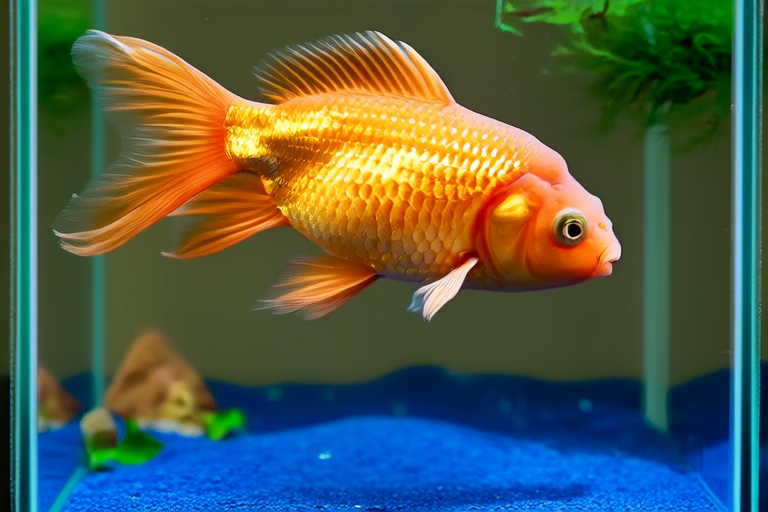From Tiny Fry to Majestic Swimmer: The Journey of a Goldfish
Welcome to the fascinating world of goldfish! These charming creatures, with their vibrant colors and graceful movements, have captured the hearts of many aquarists. From the moment they hatch as tiny fry to their eventual status as majestic swimmers, goldfish undergo a remarkable transformation. This article will guide you through every stage of their lifecycle, providing valuable insights into their dietary needs, optimal tank conditions, common health issues, and essential care tips. Whether you’re a novice or an experienced aquarist, this comprehensive guide will help you ensure that your goldfish enjoys a healthy and thriving journey from fry to full-grown adult.
The Lifecycle of a Goldfish
The life of a goldfish begins with the fertilization of eggs. Female goldfish release eggs into the water, which are then fertilized by male goldfish. Under ideal conditions, these eggs will hatch within a week, revealing the first stage of the goldfish’s life – the fry.
Fry Stage (0-6 Weeks)
Newly hatched goldfish are known as fry. At this stage, they are incredibly small and delicate, measuring only a few millimeters in length. Their bodies are translucent, making them look almost ghost-like as they swim around in search of food.
Dietary Needs: During the fry stage, goldfish primarily feed on infusoria, which is a type of microscopic organism found in aquariums. As they grow, they can start consuming finely ground fish food or specialized fry food.
Optimal Tank Conditions: Fry require a quiet, stable environment with minimal disturbance. A breeding tank with soft, slightly acidic water is ideal. Water temperature should be maintained between 70°F and 75°F (21°C to 24°C).
Common Health Issues: Due to their delicate nature, fry are susceptible to various health issues, including fungal infections and starvation. Regular water changes and proper feeding are crucial to prevent these problems.
Juvenile Stage (6 Weeks to 6 Months)
As goldfish grow from fry to juveniles, they become more robust and develop distinct features. Their bodies darken, and their fins begin to take shape. Juveniles are more active than fry and can be moved to a community tank if space allows.
Dietary Needs: Juvenile goldfish benefit from a balanced diet consisting of high-quality flake food, pellets, and occasional live or frozen foods like brine shrimp and bloodworms.
Optimal Tank Conditions: Juveniles need ample swimming space and plenty of hiding spots. A well-filtered tank with clean, oxygen-rich water is essential. Maintain the water temperature between 68°F and 74°F (20°C to 23°C).
Common Health Issues: Juveniles may suffer from fin rot, ich, and swim bladder disorders. Regular monitoring and prompt treatment can help prevent these issues.
Adult Stage (6 Months and Beyond)
By the time goldfish reach adulthood, they have fully developed their signature appearance and behavior. Adult goldfish are more confident swimmers and exhibit a range of interesting behaviors, such as exploring their surroundings and interacting with other fish.
Dietary Needs: Adult goldfish thrive on a varied diet that includes flakes, pellets, and occasional treats like vegetables and live or frozen foods. Ensure that their diet provides sufficient protein, vitamins, and minerals.
Optimal Tank Conditions: Adult goldfish require spacious tanks with adequate filtration and regular water changes. A minimum tank size of 20 gallons per fish is recommended. Maintain water temperature between 68°F and 72°F (20°C to 22°C).
Common Health Issues: Common health issues in adult goldfish include constipation, dropsy, and parasitic infections. Regular health checks and a balanced diet can help maintain their well-being.
Growth Milestones and Behavioral Changes
Goldfish go through several growth milestones during their lifecycle. Here are some key points to watch for:
- First Week: Fry begin to swim actively and show signs of feeding.
- One Month: Juveniles develop distinct coloration and start to resemble adult goldfish.
- Six Months: Goldfish reach sexual maturity and may start displaying courtship behaviors.
- One Year: Goldfish reach their full size and develop their unique personality traits.
Behavioral changes also occur as goldfish grow. Young fry tend to stay close to the surface, while juveniles explore more areas of the tank. Adult goldfish often establish territories and may show signs of aggression towards newcomers.
Tips for Owners
Raising goldfish from fry to adults requires careful attention and proper care. Here are some tips to ensure a healthy transition through each growth phase:
- Water Quality: Regular water changes and maintenance of optimal water parameters are crucial for goldfish health.
- Feeding: Provide a balanced diet and avoid overfeeding, which can lead to digestive issues.
- Monitoring: Keep a close eye on your goldfish for any signs of illness or stress. Early intervention can prevent serious health issues.
- Socialization: Introduce new fish gradually and provide hiding spots to reduce stress.
Captivating Descriptions
Imagine the tiny fry, just a few days old, swimming in a cloud of infusoria. Their delicate bodies shimmer faintly in the filtered light, creating a mesmerizing dance of life. As they grow into juveniles, their vibrant colors begin to emerge, painting the tank with hues of orange, red, and white. By the time they reach adulthood, these once-tiny creatures have transformed into majestic swimmers, gliding gracefully through the water with an air of confidence and elegance.
The journey from fry to adult is nothing short of magical. Each stage brings its own set of challenges and rewards, making the experience of raising goldfish truly special. With the right care and attention, your goldfish will not only survive but thrive, becoming a cherished member of your aquatic family.
In conclusion, the lifecycle of a goldfish is a testament to the beauty and resilience of these delightful creatures. From their humble beginnings as tiny fry to their eventual status as majestic swimmers, goldfish offer endless fascination and joy. By understanding their dietary needs, optimal tank conditions, and common health issues, you can ensure that your goldfish enjoy a healthy and fulfilling life. So, dive into the world of goldfish keeping and witness the magic of their transformation firsthand.
